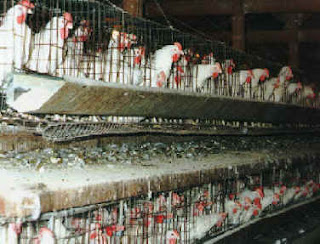
A momentous decision of great historic significance has been made by three US agencies: the Environmental Protection Agency (EPA), the National Toxicology Program (NTP) and the National Institutes of Health (NIH).
On 14th February 2008 these government agencies have signed a “Memorandum of Understanding”, i.e. a legal document about an agreement among parties, aiming to end animal testing of chemicals and drugs for human use. The implementation of this ambitious plan will take years, but it is certainly an earthshattering event.
Considering that the USA is the country where the highest number of animal experiments are performed in the West (although, as always with vivisection, the exact figures are difficult to know) and the one whose scientific community has the greatest power, and also considering that these three agencies have been among the biggest funding bodies of animal testing, the news seems almost too good to be true.
But it is true. It appears that the various scientific inadequacies, best summarized in the lack of predictive value, of the animal experimentation method have finally been acknowledged by American regulatory agencies at the federal level.
Even the head of the NIH's National Human Genome Research Institute, Francis Collins, is involved in the new plan and said in reference to animal testing: “It was expensive, time-consuming, used animals in large numbers, and it didn't always work” [notice that wonderful use of the past tense].
PETA thinks that his invovement is a good sign, and adds: “…it’s going to take an intense, focused effort on the scale of the human genome project to get the job done.”
The federal agencies' new agreement is the product of work started in cooperation in 2005 by the EPA and the NTP to speed up toxicological testing. The recent, breakthrough decision was preceded last June by a study by the US National Research Council, which shows that a clear change of direction has been taking place. The study said:
“Recent advances in systems biology, testing in cells and tissues, and related scientific fields offer the potential to fundamentally change the way chemicals are tested for risks they may pose to humans. …The new approach would generate more relevant data to evaluate risks people face, expand the number of chemicals that could be scrutinised, and reduce the time, money, and animals involved in testing.”
There is a reference here to the non-animal methods which, according to the newly-announced agreement, will replace animal testing: essentially, in vitro cultures of human cells and tissues and computer-driven testing machines.
The EPA has already started evaluating 300 chemicals with the new techniques.The first phase should be finished this year, saccording to the director of the National Center for Computational Toxicology Robert Kavlok.
Thousands of chemicals can be tested at the same time by a method that uses a glass tray with 1,536 tiny wells with the width of a fraction of a millimeter. Each well holds a few hundred human cells grown in a test tube. A testing machine, guided by a computer, drips a different chemical into each well and after some time it shines a laser through each well to count the remaining cells. A computer analyzes the toxicity of each compound depending on how the cells react. All the data discovered will be put into a public database.
The agencies will begin by testing compounds previously tested on animals to confirm that the alternative tests using cells are accurate.
The best piece of news is perhaps all in this comment by Elias Zerhouni, director of the NIH. He said that animal testing won't disappear overnight, but the agencies' work signals the beginning of the end.






